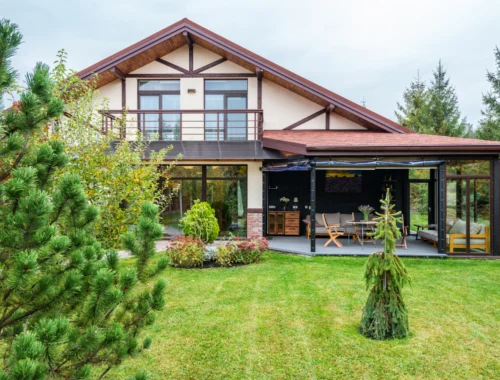
Excitement and Challenges of Adjusting to a New Home
Table of Contents
ToggleThe Excitement and Challenges of Adjusting to a New Home
Moving into a new home is an adventure. It’s a fresh start, a chance to create new routines, and an opportunity to explore a different neighborhood. But while the excitement is real, so are the challenges. Getting used to a new space, setting up furniture, and figuring out where everything belongs can take some time. Even little things, like remembering where the light switches are or adjusting to a new morning routine, can feel unfamiliar at first.
Moving from one state to another, like leaving Washington, Maryland, or any other state for Florida, adds even more changes. Weather, lifestyle, and even the way people interact might be different. The excitement of warmer temperatures, new food options, and outdoor activities can be great, but getting settled requires some patience. With the right mindset and a bit of organization, the transition can be smooth and even fun.
The Excitement of Moving to a New Home
1. A Fresh Start
One of the most exciting aspects of moving into a new home is the opportunity for a fresh start. It allows you to create new memories, decorate the space according to your preferences, and organize everything just the way you want.
A fresh environment can also bring positive energy, motivating you to establish new routines and habits. Whether it’s starting a home gym, setting up a reading nook, or designing a productive workspace, a new home gives you the perfect chance to redefine your lifestyle.
2. Personalizing Your Space
Decorating and designing your new home is an enjoyable process that lets you express your personality. From choosing wall colors and furniture to arranging decorative elements, setting up your home reflects your style and creativity.
Many people find joy in shopping for new home accessories, rearranging furniture, and experimenting with different layouts. Adding personal touches like family photos, artwork, and plants can make the new space feel warm and inviting.
3. Meeting New People
Moving to a new neighborhood introduces you to different cultures, traditions, and social circles. Making new friends and connecting with neighbors can be an exciting part of settling into a new home.
Attending community events, joining local clubs, or simply greeting people in your area can help you integrate into the community and build meaningful relationships.
4. Discovering a New Environment
A new home often means exploring a different city, town, or neighborhood. Discovering local restaurants, parks, shopping centers, and entertainment spots can be a fun adventure.
Trying out new places and learning about the area’s history and culture adds excitement to the relocation process. It helps you feel more connected to your new surroundings and enhances your overall living experience.
Challenges of Adjusting to a New Home
While moving to a new home is thrilling, it also comes with certain challenges that can make the transition stressful.
1. Emotional Adjustment
Leaving behind a familiar place, friends, and routines can be emotionally difficult. Feelings of loneliness, nostalgia, and homesickness are common during the adjustment period.
To overcome these emotions, stay in touch with old friends, engage in activities that bring you joy, and give yourself time to adapt to the new environment.
2. Unpacking and Organizing
One of the biggest challenges of moving is unpacking and organizing everything in your new home. The process can be overwhelming, especially if you have a lot of belongings.
To make it easier, create an unpacking plan and tackle one room at a time. Prioritize essential items first, and gradually arrange the rest. Proper labeling and organization during packing can also speed up the process.
3. Getting Used to a New Routine
A new home often means a new routine. Whether it’s adjusting to a different work commute, finding new grocery stores, or establishing daily habits, it can take time to settle in.
Start by creating a schedule that aligns with your new lifestyle. Slowly incorporate familiar activities into your day to make the transition smoother.
4. Adapting to a Different Neighborhood
If you have moved to a completely different area, adjusting to the local culture, climate, and lifestyle can be challenging. Understanding the new surroundings, learning the community’s norms, and adapting to any language barriers may require time and effort.
To ease the transition, explore the neighborhood regularly, introduce yourself to neighbors, and seek recommendations for local services and activities.
5. Financial Adjustments
Moving can be expensive, and managing your finances in a new home can be tricky. From utility bills and mortgage or rent payments to unexpected expenses, budgeting is crucial.
Track your expenses, plan a budget, and prioritize essential costs to avoid financial stress. If possible, set aside an emergency fund for any unforeseen expenses.
Logistics of Moving and Settling In
Moving long distances is no small task. Packing, figuring out transportation, and keeping track of everything along the way can feel overwhelming. There’s also the challenge of making sure fragile items don’t get damaged and that important things—like chargers, snacks, and a toothbrush—aren’t buried in a box at the bottom of a moving truck. The process takes planning, and the smoother the move, the easier it is to settle in.
Working with long distance movers from Washington DC, Northern VA & MD to Florida makes the process much easier. Professional movers handle the heavy lifting, transportation, and organization, making it less stressful for homeowners. Once everything arrives safely, unpacking becomes the next step. Instead of rushing to set everything up at once, focusing on essentials first—like a comfortable bed and a functional kitchen—helps make the transition feel more natural.
Climate and Lifestyle Adjustments
Moving to a new home often comes with changes in weather, and sometimes those changes are a big deal. A shift from a cool, rainy climate to a place with year-round sunshine and humidity—like trading constant drizzle for heat—can take some getting used to. Things like figuring out how to keep the house cool, learning the best times to run errands to avoid the afternoon sun, and adjusting to new seasonal habits all become part of the process.
Beyond weather, lifestyle differences can also stand out. People in different regions may have different daily rhythms, social habits, and even ways of doing things, like how they drive or where they shop. Some places are fast-paced, while others are more relaxed. Taking time to settle in and explore how locals live, eat, and enjoy their surroundings makes it easier to feel at home. Before long, the new way of life starts to feel like second nature.
Creating a Comfortable and Personalized Space
Nothing makes a house feel like home faster than adding personal touches. Unpacking favorite decorations, setting up cozy spaces, and arranging furniture in a way that feels natural can make all the difference. A new home may not feel quite right at first, but small details—like soft lighting, a well-placed rug, or even familiar scents—can instantly make it feel more inviting.
Rather than rushing to decorate everything at once, taking the time to adjust and figure out what works best makes the space feel more personal. Living in the home for a little while before making big decisions on decor or layout allows for a more natural flow. Eventually, the space starts to reflect personal style and needs, turning a house into a home.
Moving into a new home is both an adventure and an adjustment. While the excitement of fresh opportunities, new surroundings, and a different lifestyle make the experience rewarding, there are also challenges. With time, things start to feel familiar, routines fall into place, and the new home becomes a personal and comfortable space. Moving might come with challenges, but it also brings new possibilities and experiences worth looking forward to.
Conclusion
Moving to a new home is both exciting and challenging. While the process comes with its share of stress, it also opens the door to new opportunities and experiences.
By planning your move efficiently, personalizing your space, exploring your surroundings, and establishing a routine, you can ease the transition and embrace your new home with confidence.
Change is never easy, but with a positive attitude and the right strategies, you can turn your new house into a warm, welcoming, and comfortable home.
If you’ve recently moved, take your time to adjust, connect with new people, and create new memories. Your new home is a blank canvas—fill it with love, joy, and wonderful experiences!
FAQs
What are the challenges of moving home?
Relocating to a new area can be a challenging experience, requiring adaptation to various changes. The financial strain of moving, along with the search for a comfortable and affordable home, can add to the stress. Moreover, building new connections and forming relationships in an unfamiliar environment can be difficult.
How are you adjusting to your new home?
Establish Routines:
Keeping up with familiar routines can offer a sense of stability during times of change. Try to follow your regular schedule as closely as possible, whether it’s your daily morning run, weekly grocery trips, or family movie nights. Maintaining consistency can make the transition smoother and help you feel more settled in your new environment.
What are the positive and negative effects of shifting a house?
A new environment can greatly influence mental well-being. Relocating to a different home offers a fresh beginning, allowing you to break away from familiar surroundings and embrace a renewed perspective on life.
You May Also Like

Savers Return Policy
13 January 2024
Front Yard vs. Backyard Landscaping: Best Design Ideas
4 April 2025

